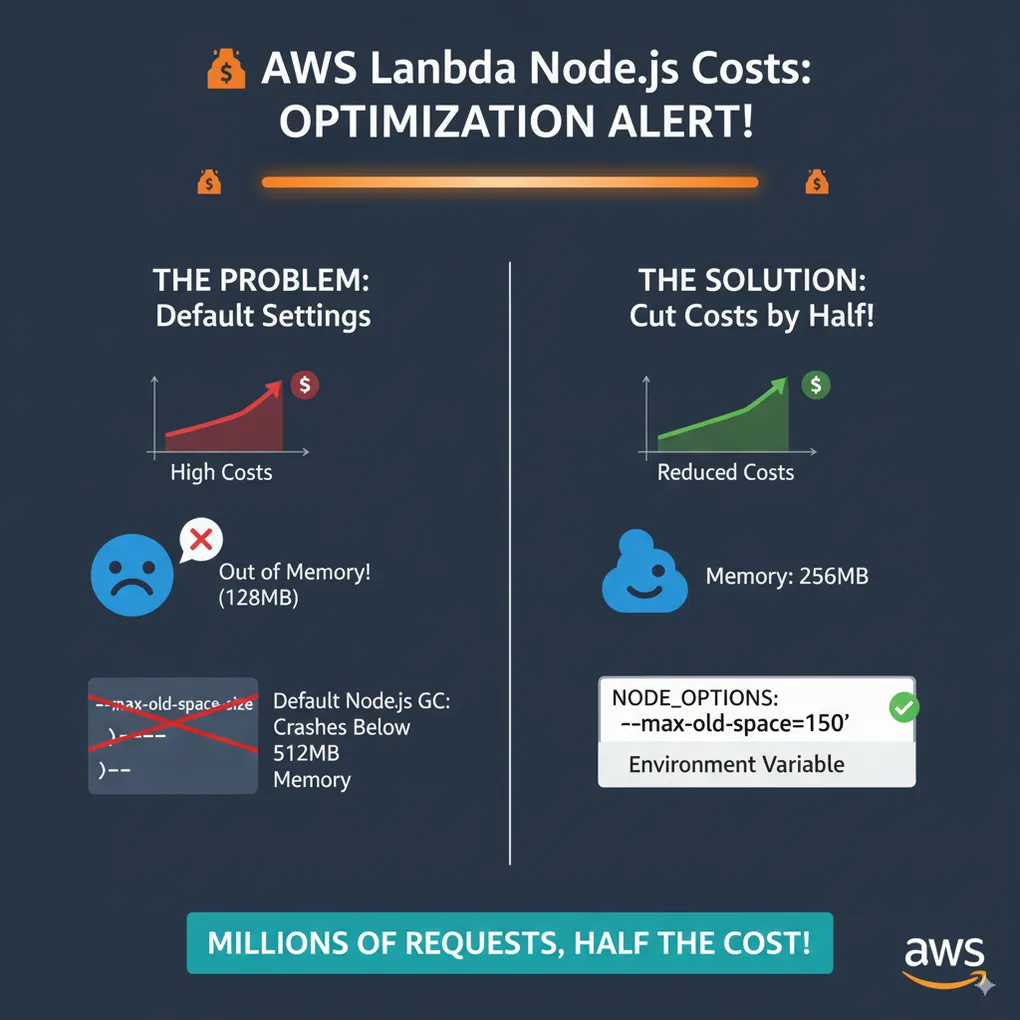
🚨 AWS Lambda Costs ALERT! 🚨 Optimizing Memory and Node.js Garbage Collection
If you’re running AWS Lambda with Node.js, this one’s for you.
Lambda pricing is based on two things:
- Allocated memory
- Execution duration
What many developers overlook is that CPU and network throughput scale with memory, meaning your performance and stability are directly tied to how much memory you configure.
The Default Trap
If you’re using the Serverless Framework, the default memory allocation is 1024 MB.
AWS recommends using the least amount of memory your function needs.
Why? Because every extra MB increases your cost per millisecond of execution.
So naturally, I tried lowering memory.
My Experiment: Going Too Low
I set my function to 128 MB — the minimum available.
At first, it seemed fine. But soon, I hit:
❌ Out of memory errors
❌ Function crashes
Why? Because of how Node.js garbage collection (GC) works inside the V8 engine.
How V8 Garbage Collection Affects Lambda
V8 has two key GC strategies:
- Mark-Sweep / Mark-Compact: Deep cleans large chunks of memory, but runs less frequently.
- Scavenge / Minor GC: Faster, smaller collections that run more often.
By default, V8 tries to balance performance and memory usage. But here’s the kicker:
👉 V8 will use up to ~512 MB of heap space by default before aggressively collecting.
So if your Lambda memory allocation is below 512 MB, the GC never gets a chance to properly reclaim memory. Your function will crash before cleanup kicks in.
The Fix: Tuning --max-old-space-size
The good news: you can control this behavior.
Lambda now supports the NODE_OPTIONS environment variable, where you can pass Node.js flags.
For memory tuning, use:
NODE_OPTIONS="--max-old-space-size=<value>"Where <value> is the max heap size in MB.
A good rule of thumb:
- Keep it below your allocated Lambda memory
- Set it to roughly half of your memory allocation
Example: My Setup
I configured:
- Lambda memory: 256 MB
NODE_OPTIONS:--max-old-space-size=150
✅ No more crashes ✅ Stable garbage collection ✅ Costs cut in half for millions of requests
Why This Works
- Lower memory allocation = cheaper Lambda per millisecond
- Controlled GC threshold = prevents OOM crashes
- Balanced configuration = performance without overspending
Best Practices for Node.js Lambdas
- Start at 256 MB as your baseline — safer than 128 MB
- Always configure
NODE_OPTIONSfor memory-bound apps - Monitor Lambda metrics (
Duration,Errors,Throttles,Max Memory Used) in CloudWatch - Load-test before production changes
Final Thoughts
AWS Lambda is powerful, but Node.js memory management quirks can easily lead to inflated costs and instability.
By fine-tuning your memory allocation and using the --max-old-space-size flag, you can:
- Avoid OOM crashes
- Optimize performance
- Save 50% or more on costs at scale
💡 If you’re running Node.js Lambdas today, check your memory settings. A few minutes of tuning could save you thousands.